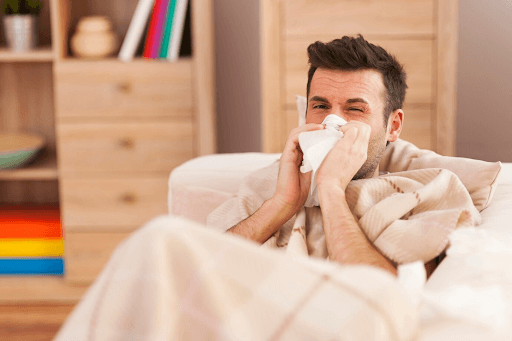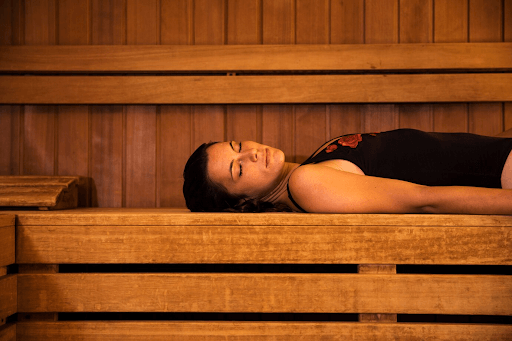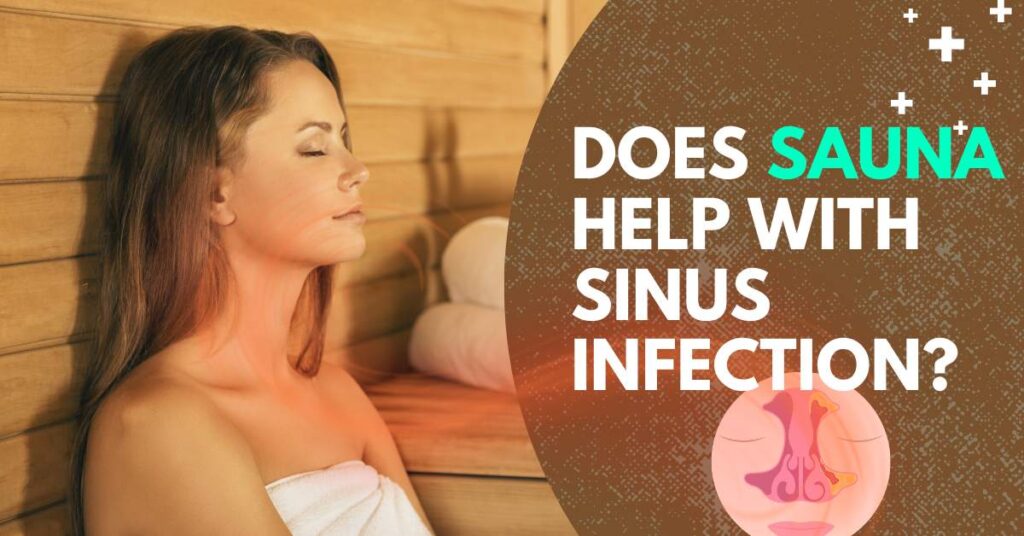Is a sauna good for sinus infection and nasal congestion? Does it help treat or prevent sinusitis?
The short answer is yes! Existing studies have shown that saunas are excellent tools for relieving sinus infections, especially when combined with other alternative treatments (like aromatherapy and salt therapy) and a healthy lifestyle.
But there is one caveat: the process is not straightforward. The extent of relief or cure you will get will depend on many factors which we will talk about later.
In this blog, we will first discuss the basics of sinus infections to understand how a sauna works to alleviate symptoms before we go to the following topics:
- 7 Benefits of a sauna for sinus infection
- 21 Helpful tips to ensure the effectiveness of sauna bathing against sinusitis
Experience the benefits of private hot tubs and saunas at Shym Saunas. Whether you need time alone or with family, our finely crafted saunas offer ideal environments to recover. Contact us now!
First of All, Here’s What You Need to Know About Sinus Infection
Before we discuss how a sauna can help with a sinus infection, you need to know the causes of this condition first. This will help you understand how effective sauna use will be in fixing your sinusitis.
But one thing is sure: a sauna does help with sinus congestion. However, the effectiveness of a sauna to cure or relieve your sinus infection will depend on how bad your infection is and the type of sauna you are using.
What Is a Sinus Infection?

A sinus infection, or sinusitis, occurs when the tissues in your sinuses become inflamed, often due to viruses but sometimes bacteria, fungi, or allergies. Sinuses are air-filled spaces behind your nasal cavities that protect your lungs from bacteria. When infected, mucus builds up, causing swelling and inflammation.
Sinusitis vs. Common Cold: What’s the Difference?
Colds and sinusitis share many symptoms and treatments. However, colds are caused by a specific virus, while sinusitis can result from various viruses, bacteria, or fungi.
There are two major types of sinus infections: acute and chronic.
- Acute Sinus Infection
Acute sinus infections usually last between 2 to 8 weeks and are often triggered by the common cold or flu. They typically clear up in about a week. However, if symptoms persist or worsen, it could lead to chronic sinusitis, and you should see a sinus specialist right away.
- Chronic Sinus Infection
Chronic sinus infections last 12 weeks or more. They can be caused by nasal polyps, a deviated septum, or sometimes fungal infections. In rare cases, they may lead to serious problems like a brain abscess or meningitis.
Sinus Infection Symptoms: How Does Sinusitis Affect You?
Key symptoms of a sinus infection include the following:
- Stuffy nose
- Headaches
- Bad breath
- Persistent cough
- Facial pain
- Dental pain
- Reduced sense of smell
- Unusual green or yellow nasal discharge
Feeling frustrated by sinus infections? The struggle with breathing, headaches, and persistent mucus is real. But there’s hope! Using a sauna can speed up your recovery and help you feel better sooner.
So, how is a sauna good for sinus infection? Let’s find out in the next section!
7 Benefits of Sauna for Sinus Infection: How a Sauna Help Relieve Your Symptoms

If you’re dealing with nasal congestion, headaches, and other symptoms of sinus infection, a sauna session can provide much-needed relief. While it won’t cure your sinus infection, the heat and moisture help alleviate stuffiness, dryness, and pressure. The high heat in a sauna raises your body temperature, triggering a natural stress response that can be effective against sinusitis.
Here are seven ways a sauna can help you manage sinusitis symptoms:
#1. Sauna Bathing Can Help Relieve Sinus Congestion
Nasal congestion is a common symptom of sinus infection which can be relieved by spending time in a sauna.
What to Know About Nasal Congestion
Nasal congestion goes beyond a simple stuffed nose. Those with chronic congestion often follow strict routines, use nasal sprays, and avoid specific triggers. Severe cases can limit outdoor activities and cause long-term issues.
While commonly linked to allergic rhinitis, nasal congestion has multiple causes, including pollution, viral infections, and chronic inflammation like sinus infections. The condition not only affects breathing but also disrupts sleep, leading to further complications.
So How Can a Sauna Help With Sinus Congestion?
Saunas can naturally decongest sinuses and clear mucus build-up. The heat opens up your airways, relieving pressure on the nose and face, similar to using a warm, wet cloth on a stuffy nose. As your skin heats up, blood circulation improves, helping to clear sinuses and ease breathing.
Studies and articles supporting the effectiveness of saunas for nose congestion include the following:
- Heat and Vasodilation: Sauna heat stimulates vasodilation, which improves oxygenation and reduces nasal inflammation, making it easier to clear phlegm.
- Respiratory Hydration: MedicalNewsToday explained that sauna vapors hydrate the respiratory tract and can thin out mucus, aiding its removal from nasal passages.
- Infrared Saunas: Multiple studies show that infrared saunas can alleviate nasal congestion and improve symptoms like sneezing, a runny or stuffy nose, and itchy eyes, with no side effects from daily 40-minute sessions.
- Steam Inhalation: A 2021 study found that steam inhalation provided quick relief for allergic rhinitis, reducing symptoms such as sneezing, congestion, and itchy nose and throat.
- Herbal Steam Baths: Research on herbal steam baths showed similar improvements in nasal congestion.
Since saunas can relieve nasal congestion, they are also good for colds.
Using a sauna can help ease cold symptoms such as body aches, chilliness, a stuffy nose, and a sore throat. While it won’t cure your cold, the warm air can provide relief. If you’re feeling very sick or have a fever, it’s best to rest and stay hydrated instead of hitting the sauna.
We do not recommend using a sauna if you have a fever.
#2. Saunas Can Reduce Sinus-Associated Headaches
When you have sinusitis, your nasal lining swells, causing pressure and pain around your face and forehead. This can lead to headaches, especially when bending over. Applying heat, like a hot towel or spending time in a sauna, helps reduce swelling and congestion.
Science backs this up; a 2016 study found that steam inhalation effectively alleviates sinusitis symptoms and reduces sinus-related headaches.
#3. Sauna Exposure Can Help You Get a Good Night’s Sleep
Sinusitis often messes with your sleep schedule, making it hard to rest well. According to the Sleep Foundation, your body naturally cools down before sleep. The cool-off period after using a sauna mimics this process, signaling your body that it’s time to sleep. So, enjoying a sauna session can help you get a better night’s sleep.
#4. The Warmth in a Sauna Eliminates Harmful Bacteria
When you have a sinus infection, harmful bacteria thrive and can lead to more illnesses.
Using a sauna raises your body’s core temperature, which helps stop and reduce bacterial growth.
The heat activates your body’s stress response and boosts natural immunity, producing heat shock proteins that kill harmful bacteria, viruses, parasites, and fungi. This process helps you quickly alleviate sinus infection symptoms.
#5. Frequent Sauna Bathing Can Get Rid of Toxins
Did you know that toxins in the air can worsen sinus symptoms and even lead to chronic rhinosinusitis? But there’s good news! Regular sauna sessions can help detoxify your body through sweating, easing those pesky sinus issues.
#6. Saunas Can Speed Up Your Recovery
Relaxing in a sauna can significantly aid sinus recovery by calming your nervous system. This is because a calm mind and body have been proven to promote quicker healing.
When you’re relaxed, your immune system performs better, aiding in fighting off infections faster. So, hitting the sauna not only soothes your nerves but also boosts your overall recovery.
NOTE: Saunas might relax your nervous system, potentially easing nasal congestion, though some studies show mixed results.
#7. Saunas Can Lower Your Overall Risk of Getting Respiratory Diseases
Using a sauna for chest congestion, for instance, can help keep your airways healthier. Studies show that regular sauna use lowers the risk of pneumonia and asthma. The frequency and duration of sauna sessions are directly linked to this reduced risk.
Saunas also reduce overall inflammation levels, which in turn lowers the risk of respiratory diseases. Lower inflammation means less chance of developing issues like chest congestion, sinus congestion, and coughing.
Overall, saunas don’t harm the lungs, making them safe for those with chest congestion. However, always consult your physician before starting sauna sessions and stop if you feel unwell.
IMPORTANT: What to Know About Sauna Exposure as a Treatment to Sinus Infection

#1. Steam inhalation through sauna sessions may not be enough for chronic sinus infections.
Sure, the warmth and moisture can provide temporary relief by loosening mucus and easing congestion. However, for persistent sinusitis, this method alone won’t cut it. Chronic cases often require a more comprehensive treatment plan.
If your symptoms include fever, pain, or difficulty breathing, it’s crucial to seek medical advice.
These could be signs of a more serious infection that needs professional intervention. Don’t rely solely on sauna sessions; consult a healthcare provider to explore effective treatments tailored to your needs.
#2. A sauna is not an alternative to sinus treatment.
If you’re curious whether a sauna can help with sinus infections, let me clear that up for you. While a sauna session might provide some temporary relief, it’s not a replacement for proper sinus treatment.
Think of sauna sessions as a nice bonus, not the main event. They’re great for complementing your regular sinus care routine, but not for replacing it.
For effective sinus relief, follow the recommendations from the CDC. They suggest using saline nasal sprays, decongestants, warm compresses, pain relievers, and cough and cold medicines. These are proven methods to tackle sinus issues.
So, if you enjoy a good sauna, go ahead and use it to support your sinus treatment. But always stick to the primary remedies and consult your doctor for the best advice.
#3. Various factors will determine whether your nasal congestion can be fixed or not.
Here’s the deal: using a sauna to relieve sinus congestion isn’t a one-size-fits-all solution. There are so many different factors at play that it’s tough to say whether it’ll work for you without knowing more about your specific situation.
While nasal congestion might seem simple on the surface, there’s a lot going on behind the scenes.
Your congestion is influenced by brain signaling compounds like histamine, inflammatory markers, and various cell types interacting in your body. It’s a complex web of biological processes.
If your congestion is linked to your genetic makeup and diet, the sauna might not be as effective. But if your nose just needs a bit of help clearing out buildup after an immune response, the results could be quite different.
Other factors come into play as well. For example, your body’s fight or flight response to the sauna heat can impact how much relief you get. The root cause of your congestion, your environment, and your genetics all play a part in whether a sauna will help.
Imagine you have allergies to pollen—using a sauna might clear your airways temporarily, but the congestion could return once you’re back outside. On the other hand, if your congestion is due to mouth breathing, a sauna could help address the underlying issue more effectively.
So, whether or not a sauna can fix your nasal congestion depends on various factors unique to you.
21 Helpful Tips to Ensure the Effectiveness of Sauna Use for Sinusitis and How to Avoid Making Your Condition Worse

To make your recovery faster and maximize the effect of sauna bathing in relieving your sinus infection, follow the tips below:
9 Tips to Maximize the Effect of Sauna on Sinus Infection
#1. Choose the Right Type of Sauna
When you’re thinking about using a sauna for a sinus infection, it’s crucial to know the different types of saunas available. Let’s dive into the options so you can pick the best one for your needs.
- Traditional Saunas
Traditional saunas, also known as dry saunas, heat a room using hot rocks and steam. These saunas typically reach temperatures between 65 to 90 degrees Celsius.
The high heat helps clear mucus from your nasal passages and weakens bacteria and viruses. It’s an effective way to improve circulation, boost your immune system, and reduce stress.
One cool feature is that you can adjust the humidity by pouring water on the heated rocks, creating steam that can help you breathe easier.
- Steam Saunas
Steam saunas are different from traditional ones as they use high humidity to provide their benefits.
A steam generator fills the room with heated water vapor, creating a humid environment with temperatures around 43 degrees Celsius. This high humidity helps loosen tight muscles, opens your pores, and can soothe sore throats, allergies, and colds.
- Infrared Saunas
Infrared (IR) saunas bring a modern twist by using infrared light to warm your body directly rather than heating the air around you. These saunas operate at a lower temperature, usually between 48 to 60 degrees Celsius, making them more comfortable for longer sessions.
Infrared waves penetrate deep into your skin and muscles, improving cardiovascular health, speeding up recovery after workouts, and relieving chronic pain.
Is an infrared sauna better than a regular sauna?
Not necessarily because each sauna type has its unique benefits.
Traditional saunas provide intense heat and customizable humidity, steam saunas offer high humidity at lower temperatures, and infrared saunas deliver deep heat at a more manageable temperature.
Experiment with these options to find the one that best suits your needs and helps alleviate your sinus infection symptoms.
#2. Sauna Before Bed
A quick sauna session before bedtime could help keep those annoying symptoms at bay, letting you sleep more comfortably.
Ever noticed how your sinuses tend to act up more at night? Lying down can often make inflammation, stuffiness, and overall discomfort worse. Imagine being jolted awake because you can’t breathe through your nose and end up resorting to mouth breathing. It’s not a pleasant experience, right?
So, evenings are the perfect time to enjoy a sauna session.
Why evenings, you ask? Well, research highlights that moist heat can help clear out mucus that’s clogging up your sinuses. Plus, sauna heat is great for lowering cortisol levels—the pesky stress hormone.
Since stress can trigger inflammation, unwinding in the sauna in the evening can help ease tension and keep your sinuses calm. It can also relax your muscles, ease tension, and help you unwind after a long day. Plus, the heat helps to trigger your body’s natural cooling mechanisms, which can promote better sleep.
#3. Limit Your Session Duration
When dealing with a sinus infection, it’s wise to keep your sauna sessions short and sweet—around 10 to 15 minutes. This duration hits the sweet spot, offering all the steam’s benefits without the downsides of prolonged heat exposure.
You’re already under the weather, and spending too long in the sauna could exacerbate your symptoms.
For example, if you’re already feeling feverish, the extra heat can make things worse. By sticking to a 15-minute session, you ensure you’re getting the therapeutic benefits without risking additional discomfort or health issues. So, set that timer and enjoy the relief!
#4. Do More Frequent Sessions
The key to using a sauna effectively for sinus infection relief is consistency.
Aim to spend a few minutes in the sauna daily.
This regularity helps your body fight off the infection more swiftly. If your schedule is packed and daily sessions aren’t feasible, try to get in at least three times a week.
Stick with this routine for about four weeks to really see the benefits. Regular sauna sessions are crucial to speeding up your recovery and getting back to feeling your best.
#5. Relaxation is the Key
Staying calm is crucial for a speedy recovery, especially when dealing with sinus infections. I know it can be tough to relax with all that discomfort but trust me, it’s worth it, especially during your sauna sessions.
One way to enhance relaxation while in the sauna is to practice deep breathing. Inhale slowly, hold for a moment, then exhale completely. This simple technique can do wonders for your stress levels.
Another fantastic method is meditation. Close your eyes, focus on your breath, and let your mind drift away from the sinus woes.
#6. Rinse Your Sinuses With a Neti Pot
Before or after your sauna time, consider using a neti pot with a saline solution to rinse your sinuses. This can help reduce inflammation and clear out any gunk. Combining this technique with your sauna routine can really make a difference in how quickly you bounce back from a sinus infection.
#7. Aromatherapy With Essential Oils
Aromatherapy is a fantastic way to elevate your sauna experience, especially if you’re targeting sinus relief. Pouring just a few drops of essential oils like eucalyptus onto the sauna rocks can transform the steam into a therapeutic mist. Not only does it create a pleasant aroma, but it also helps to open up those congested nasal passages, making it easier to breathe.
#8. Salt Therapy as an Addon
Want to boost your infrared sauna sessions? Try adding salt therapy (halotherapy). This involves dispersing heated salt particles into the air, which then travel through your nasal passages and airways. It can make nasal breathing much easier, reducing stress on your body.
#9. Cool Down and Rest After Your Session
Once you step out of the sauna, take a moment to let your body cool down naturally before hopping in the shower. It’s crucial to allow your system to adjust and start cooling off slowly.
Don’t forget to drink plenty of water! Rehydrating is key since you’ve probably sweated out quite a bit. Keeping those hydration levels up helps your body recover and maintain balance.
Also, as tempting as it might be to dive straight into a workout, tackle your to-do list, or even plan a fun night out, it’s best to hold off. Give your body some time to rest and heal. Let the sauna’s benefits do their work without any added strain. Just relax, maybe enjoy a light snack, and take it easy for a while. Your body will thank you!
7 Important Precautions for Using a Sauna Safely For Sinus Infection
- Stay Hydrated: Drink 2-4 glasses of water before entering the sauna. Skip alcohol, caffeine, and sugary drinks.
- Consult Your Doctor: If you have heart problems, diabetes, kidney issues, or if you’re pregnant, check with your doctor before using a sauna.
- Dress Appropriately: Wear loose, clean, and dry clothes or just a towel. Avoid jewelry and metal accessories—they can get hot and burn you.
- Limit Your Time: Spend no more than 15-20 minutes in the sauna. If you feel dizzy or nauseous, leave immediately and cool down slowly.
- Avoid Sudden Temperature Changes: Don’t take a cold shower or plunge into cold water right after the sauna. Let your body cool down gradually to avoid a sudden drop in blood pressure.
- Skip the Sauna if You’re Sick: If you have a fever or start feeling feverish in the sauna, exit immediately.
- Rehydrate and Refuel: After your sauna session, drink plenty of water or isotonic drinks to replace lost fluids and electrolytes. Light snacks like fruits or nuts are great, but avoid heavy meals, alcohol, and smoking for at least an hour.
5 Things to Avoid to Not Make Your Sinus Infection Worse
- Overusing Nasal Sprays
While nasal sprays can offer quick relief, relying on them too much can backfire. The active ingredient in these sprays can worsen your sinus infection if used for over a week. If your symptoms persist, it’s time to consult a specialist.
- Irritating Your Sinuses
Avoid exposing yourself to allergens, perfumes, smoke, and other irritants. These can aggravate your sinuses, making your symptoms worse. If you smoke or use scented products, consider stopping immediately to see an improvement in your condition.
- Not Staying Hydrated
Drinking lots of water is crucial when you have a sinus infection. Staying hydrated helps thin the mucus, making it easier to clear. So, make sure you’re drinking enough fluids throughout the day.
- Skipping on Sleep
Rest is vital for recovery. Aim for at least eight hours of sleep to help your immune system fight off the infection. Try propping yourself up with extra pillows; this can help mucus drain more effectively and prevent congestion from disrupting your sleep.
- Keeping Your Air Too Dry
Dry air, especially during winter, can irritate your sinuses and make your infection worse. Use a humidifier or vaporizer to keep the air moist.
In a pinch, you can create a temporary humid environment by running a hot shower and closing the bathroom door. The steam will help ease your symptoms. Or, you can just hit the sauna.
FAQs
Will a sauna help with a sinus infection?
Yes, a sauna can help relieve sinus infection symptoms. The heat and steam from a sauna can reduce nasal congestion, ease sinus pressure, and improve overall respiratory function. However, it should not replace medical treatments, especially for chronic or severe sinus infections.
Is heat good for sinus infection?
Heat can be beneficial for sinus infections as it helps to open up nasal passages, reduces inflammation, and alleviates pressure. Applying heat through methods like saunas, steam inhalation, or warm compresses can provide significant relief from sinus infection symptoms.
Is it good to steam when you have a sinus infection?
Yes, steaming can be very helpful when you have a sinus infection. The steam helps to moisten and loosen mucus, making it easier to clear your nasal passages. This can reduce congestion and improve breathing, providing relief from sinus discomfort.
Is it good to go in a sauna with a cold?
Using a sauna when you have a cold can provide relief by easing symptoms like nasal congestion and sore throat. The warm, moist air helps to open nasal passages and reduce discomfort. However, if you have a fever or feel very unwell, it is better to rest and stay hydrated rather than use a sauna.
Thus, Using a Sauna for Sinus Infection Can Help Relieve Symptoms
It’s clear that sauna sessions can play a big role in helping you bounce back from a sinus infection. You’ll likely feel better quickly, thanks to the steam opening up your nasal passages and easing headaches.
However, remember to be careful and stick to sauna best practices. Don’t stay in too long, and avoid taking a cold plunge immediately afterward. With consistent use, you might see improvement in just a few weeks, maybe even days.
Thinking about setting up a sauna at home? Reach out to us! Shym Saunas offers high-quality saunas and hot tubs along with other accessories. We can handle all your home sauna needs!



